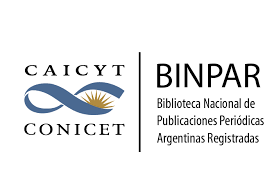Do EMDR eye movements’ worsen reactivation of visual stimuli and improve reactivation of verbal stimuli?
¿Los movimientos oculares del EMDR empeoran la reactivación de los estímulos visuales y mejoran la reactivación de los estímulos verbales?
Palabras clave:
memoria, trastorno de estrés postraumático (TEPT), Desensibilización y Reprocesamiento por Movimiento Ocular (EMDR), teoría de representación dual del TEPT, reactivación, movimientos oculares, estímulos visuales, estímulos verbalesResumen
La Teoría de Representación Dual del Trastorno de Estrés Postraumático (TEPT) sugiere que los recuerdos traumáticos tienen componentes verbales y no verbales, con los recuerdos vívidos caracterizados por contenido sensorial y no verbal. El TEPT puede afectar la recuperación de la memoria, con individuos que experimentan dificultad en tareas de memoria verbal y, potencialmente, un mejor rendimiento en tareas no verbales. Además, varios estudios sugieren que la reactivación de los recuerdos traumáticos se lateraliza con frecuencia hacia el hemisferio derecho, el cual está asociado con la reactivación de recuerdos visuales. Por otro lado, el recuerdo de estímulos verbales tiende a activar el hemisferio izquierdo, el cual está relacionado con la reactivación de recuerdos verbales. La Desensibilización y Reprocesamiento por Movimiento Ocular (EMDR, por sus siglas en inglés), una terapia para el TEPT, utiliza movimientos oculares horizontales durante la reactivación de recuerdos para modular los recuerdos de los pacientes. Cómo los movimientos oculares interactúan con la memoria sigue siendo incierto. Algunos estudios muestran que los movimientos oculares reducen la vividez de los estímulos visuales, mientras que otros reportan que los movimientos oculares mejoran la recuperación de recuerdos verbales. Proponemos una nueva hipótesis para explicar el efecto de los movimientos oculares sobre la reactivación de la memoria. Sostenemos que podría haber un efecto diferencial de los movimientos oculares en la memoria según el tipo de estímulo, mejorando el recuerdo de estímulos verbales pero potencialmente empeorándolo para estímulos visuales. La Teoría de Representación Dual del TEPT y las observaciones clínicas respaldan esta hipótesis. Sin embargo, actualmente existe una falta de estudios que evalúen el impacto de los movimientos oculares sobre la reactivación de la memoria con diferentes estímulos. Se necesita más investigación para explorar esta hipótesis y proporcionar evidencia sobre el efecto diferencial de los movimientos oculares.Citas
Adenauer, H., Catani, C., Gola, H., Keil, J., Ruf, M., Schauer, M., & Neuner, F. (2011). Narrative exposure therapy for PTSD increases top-down processing of aversive stimuli - evidence from a randomized controlled treatment trial. BMC Neuroscience, 12. https://doi.org/10.1186/1471-2202-12-127
American Psychiatric Association. (2014). Guía de consulta de loscriteriosdiagnósticos del DSM-5®: Spanish Edition of the Desk Reference to the Diagnostic Criteria From DSM-5®. American Psychiatric Pub.
Andrade, J., Kavanagh, D., & Baddeley, A. (1997). Eye-movements and visual imagery : A working memory approach to the treatment of posttraumatic stress disorder. British Journal of Clinical Psychology, 36, 209–223.https://doi.org/10.1111/j.2044-8260.1997.tb01408.x
Brewin, C. R. (2001). A cognitive neuroscience account of posttraumatic stress disorder and its treatment. Behaviour Research and Therapy, 39(4), 373–393. https://doi.org/10.1016/S0005-7967(00)00087-5
Brewin, C. R., Dalgleish, T., & Joseph, S. (1996). A dual representation theory of posttraumatic stress disorder. Psychological Review, 103(4), 670–686. https://doi.org/10.1037/0033-295X.103.4.670
Brewin, C. R., Sue Kleiner, J., Vasterling, J. J., & Field, A. P. (2007). Memory for Emotionally Neutral Information in Posttraumatic Stress Disorder: A Meta-Analytic Investigation. Journal of Abnormal Psychology, 116(3), 448–463. https://doi.org/10.1037/0021-843X.116.3.448
Cáceres Rubio, M. J., & Crespo López, M. (2019). La Terapia de Exposición Narrativa como alternativa terapéutica para el Trastorno de Estrés Postraumático Complejo. Revista de Victimología, 9, 5–29. https://doi.org/10.12827/RVJV.9.01
Christman, S. D., Garvey, K. J., Propper, R. E., &Phaneuf, K. A. (2003). Bilateral eye movements enhance the retrieval of episodic memories. Neuropsychology, 17(2), 221–229. https://doi.org/10.1037/0894-4105.17.2.221
Christman, S. D., &Propper, R. E. (2001). Superior episodic memory is associated with interhemispheric processing. Neuropsychology, 15(4), 607–616). https://doi.org/10.1037/0894-4105.15.4.607
Christman, S. D., Propper, R. E., & Dion, A. (2004). Increased interhemispheric interaction is associated with decreased false memories in a verbal converging semantic associates paradigm. Brain and Cognition, 56, 313–319. https://doi.org/10.1016/j.bandc.2004.08.005
Engelhard, I. M., van den Hout, M. A., &Smeets, M. A. M. (2011). Taxing working memory reduces vividness and emotional intensity of images about the Queen’s Day tragedy. Journal of Behavior Therapy and Experimental Psychiatry, 42(1), 32–37. https://doi.org/https://doi.org/10.1016/j.jbtep.2010.09.004
Frith, C. D., Friston, K. J., Liddle, P. F., &Frackowiak, R. S. J. (1991). A PET study of word finding. Neuropsychologia, 29(12), 1137–1148. https://doi.org/10.1016/0028-3932(91)90029-8
Holmes, E. A., & Bourne, C. (2008). Inducing and modulating intrusive emotional memories: A review of the trauma film paradigm. ActaPsychologica, 127, 553–566. https://doi.org/10.1016/j.actpsy.2007.11.002
Jeffries, F. W., & Davis, P. (2013). What is the role of eye movements in eye movement desensitization and reprocessing (EMDR) for post-traumatic stress disorder (PTSD)? A review. Behavioural and Cognitive Psychotherapy, 41(3), 290–300. https://doi.org/10.1017/S1352465812000793
Kapur, S., Rose, R., Liddle, P. F., Zipursky, R. B., Brown, G. M., Stuss, D., Houle, S., &Tulving, E. (1994). The role of the left prefrontal cortex in verbal processing: semantic processing or willed action? Neuroreport: An International Journal for the Rapid Communication of Research in Neuroscience, 5(16), 2193–2196.
Kavanagh, D. J., Freese, S., Andrade, J., & May, J. (2001). Effects of visuospatial tasks on desensitization to emotive memories. British Journal of Clinical Psychology, 40, 267–280.
Lanius, R. A., Williamson, P. C., Densmore, M., Boksman, K., Neufeld, R. W., Gati, J. S., & Menon, R. S. (2004). The Nature of Traumatic Memories: A 4-T fMRI Functional Connectivity Analysis. American Journal of Psychiatry, 161(1), 36–44. https://doi.org/10.1176/appi.ajp.161.1.36
Lescano, R. (2022). Neurociencias cognitivas, investigación y EMDR. Manual para discutir con fundamentos. Rubén Osvaldo Lescano.
Matzke, D., Nieuwenhuis, S., Slagter, H. A., Molen, M. W. Van Der, & Wagenmakers, E. (2015). The Effect of Horizontal Eye Movements on Free Recall: A Preregistered Adversarial Collaboration Preregistered Adversarial Collaboration. Journal of Experimental Psychology: General, 144(1), 1-15.
Novo Navarro, P., Landin-Romero, R., Guardiola-Wanden-Berghe, R., Moreno-Alcázar, A., Valiente-Gómez, A., Lupo, W., García, F., Fernández, I., Pérez, V., &Amann, B. L. (2018). 25 years of Eye Movement Desensitization and Reprocessing (EMDR): The EMDR therapy protocol, hypotheses of its mechanism of action and a systematic review of its efficacy in the treatment of post-traumatic stress disorder. Revista de Psiquiatria y Salud Mental, 11(2), 101–114. https://doi.org/10.1016/j.rpsm.2015.12.002
Pagani, M., Di Lorenzo, G., Monaco, L., Niolu, C., Siracusano, A., Verardo, A. R., Lauretti, G., Fernandez, I., Nicolais, G., Cogolo, P., &Ammaniti, M. (2011). Pretreatment, Intratreatment, and Posttreatment EEG Imaging of EMDR: Methodology and Preliminary Results From a Single Case. Journal of EMDR Practice and Research, 5(2), 42–56. https://doi.org/10.1891/1933-3196.5.2.42
Paivio, A. (1990). Mental representations: A dual coding approach. Oxford University Press.
Phaf, R. H. (2017). Eye Movements Enhance Recollection of Re-Imagined Negative Words : A Link Between EMDR And Sire ?8(4), 364–375. https://doi.org/10.5127/jep.059916
Propper, R. E., Pierce, J., Geisler, M. W., Christman, S. D., &Bellorado, N. (2007). Effect of Bilateral Eye Movements on Frontal Implications for EMDR Therapy. 195(9), 785–788. https://doi.org/10.1097/NMD.0b013e318142cf73
Rabe, S., Zoellner, T., Beauducel, A., Maercker, A., & Karl, A. (2008). Changes in brain electrical activity after cognitive behavioral therapy for posttraumatic stress disorder in patients injured in motor vehicle accidents. Psychosomatic Medicine, 70(1), 13–19. https://doi.org/10.1097/PSY.0b013e31815aa325
Rauch, S. L., Kolk,van der Kolk, B. A., Fisler, R. E., Alpert, N. M., Fischman, A. J., Jenike, M. A., & Pitman, R. K. (1996). A symptom provocation study of posttraumatic stress disorder using positron emission tomography and script-driven imagery. Archives of General Psychiatry, 53, 380–387.
Roberts, B. R. T., Fernandes, M. A., & MacLeod, C. M. (2020). Re-evaluating whether bilateral eye movements influence memory retrieval. PLoS ONE, 15(1), 1–20. https://doi.org/10.1371/journal.pone.0227790
Samara, Z., Elzinga, B. M., Slagter, H. A., Nieuwenhuis, S., & Stanford, A. D. (2011). Do horizontal saccadic eye movements increase interhemispheric coherence? Investigation of a hypothesized neural mechanism underlying EMDR. 2, 1–9. https://doi.org/10.3389/fpsyt.2011.00004
Sánchez Beisel, J. M., Fernández Larrosa, P. N., &Andreau, J. M. (2020). Estrategias de prevención y reducción de intrusiones involuntarias en el Trastorno por Estrés Postraumático. Anuario de Investigaciones, 27, 463–471.
Schiffer, F., Teicher, M. H., & Papanicolaou, A. C. (1995). Evoked potential evidence for right brain activity during the recall of traumatic memories. Journal of Neuropsychiatry and Clinical Neurosciences, 7(2), 169–175. https://doi.org/10.1176/jnp.7.2.169
Shapiro, F. (2018). Eye Movement Desensitization and Reprocessing (EMDR) Therapy. Basic principles, protocols and procedures (3rd ed.). The Guildford Press.
Teicher, M. H., Ito, Y., Glod, C. A., Andersen, S. L., Dumont, N., & Ackerman, E. (1997). Preliminary evidence for abnormal cortical development in physically and sexually abused children using EEG coherence and MRI. Annals of the New York Academy of Sciences, 821, 160–175. https://doi.org/10.1111/j.1749-6632.1997.tb48277.
van den Hout, M. A., Bartelski, N., & Engelhard, I. M. (2013). On EMDR: Eye movements during retrieval reduce subjective vividness and objective memory accessibility during future recall. Cognition and Emotion, 27(1), 177–183. https://doi.org/10.1080/02699931.2012.691087
van den Hout, M. A., Engelhard, I. M., Rijkeboer, M. M., Koekebakker, J., Hornsveld, H., Leer, A., Toffolo, M. B. J., &Akse, N. (2011). EMDR: Eye movements superior to beeps in taxing working memory and reducing vividness of recollections. Behaviour Research and Therapy, 49(2), 92–98. https://doi.org/10.1016/j.brat.2010.11.003
van den Hout, M. A., Rijkeboer, M. M., Engelhard, I. M., Klugkist, I., Hornsveld, H., Toffolo, M. J. B., & Cath, D. C. (2012). Tones inferior to eye movements in the EMDR treatment of PTSD. Behaviour Research and Therapy, 50(5), 275–279. https://doi.org/10.1016/j.brat.2012.02.001
van den Hout, M., Muris, P., Salemink, E., & Kindt, M. (2001). Autobiographical memories become less vivid and emotional after eye movements. British Journal of Clinical Psychology, 121–130.
van der Kolk, B. A., & Fisler, R. (1995). Dissociation and the fragmentary nature of traumatic memories: Overview and exploratory study. Journal of Traumatic Stress, 8(4), 505–525.
van der Kolk, B. A., Hopper, J. W., & Osterman, J. E. (2001). Exploring the Nature of Traumatic Memory. Journal of Aggression, Maltreatment & Trauma, 4(2), 9–31. https://doi.org/10.1300/j146v04n02_02van der Kolk, B. A., & McFarlane, A. C. (1996). Traumatic stress: The effects of overwhelming experience on mind, body, and society. Guilford Press.
van Schie, K., van Veen, S. C., &Hagenaars, M. A. (2019). The effects of dual-tasks on intrusive memories following analogue trauma. Behaviour Research and Therapy, 120, 103448. https://doi.org/10.1016/j.brat.2019.103448
Wagner, A. D., Poldrack, R. A., Eldridge, L. L., Desmond, J. E., Glover, G. H., & Gabrieli, J. D. E. (1998). Material-specific lateralization of prefrontal activation during episodic encoding and retrieval. NeuroReport, 9(16), 3711–3717. https://doi.org/10.1097/00001756-199811160-00026
Wilson, D. L., Silver, S. M., Covi, W. G., & Foster, S. (1996). Eye movement desensitization and reprocessing: Effectiveness and autonomic correlates. Journal of Behavior Therapy and Experimental Psychiatry, 27(3), 219–229. https://doi.org/10.1016/S0005-7916(96)00026-2
Descargas
Publicado
Cómo citar
Número
Sección
Licencia
CREATIVE COMMONS 4.0 Internacional
Los trabajos publicados en esta revista están bajo Licencia Creative Commons Atribución-NoComercial-CompartirIgual 4.0 Internacional.
Las obras publicadas bajo esta licencia pueden ser compartidas, copiadas y redistribuidas en cualquier medio o formato. Asimismo, se autoriza la adaptación, remezcla, transformación y creación. Tanto el compartir como el adaptar son posibles siempre y cuando se le otorgue el crédito a la obra de forma adecuada, proporcionando un enlace a la licencia e indicando si se han realizado cambios. Asimismo, no es posible realizar un uso comercial del material.






